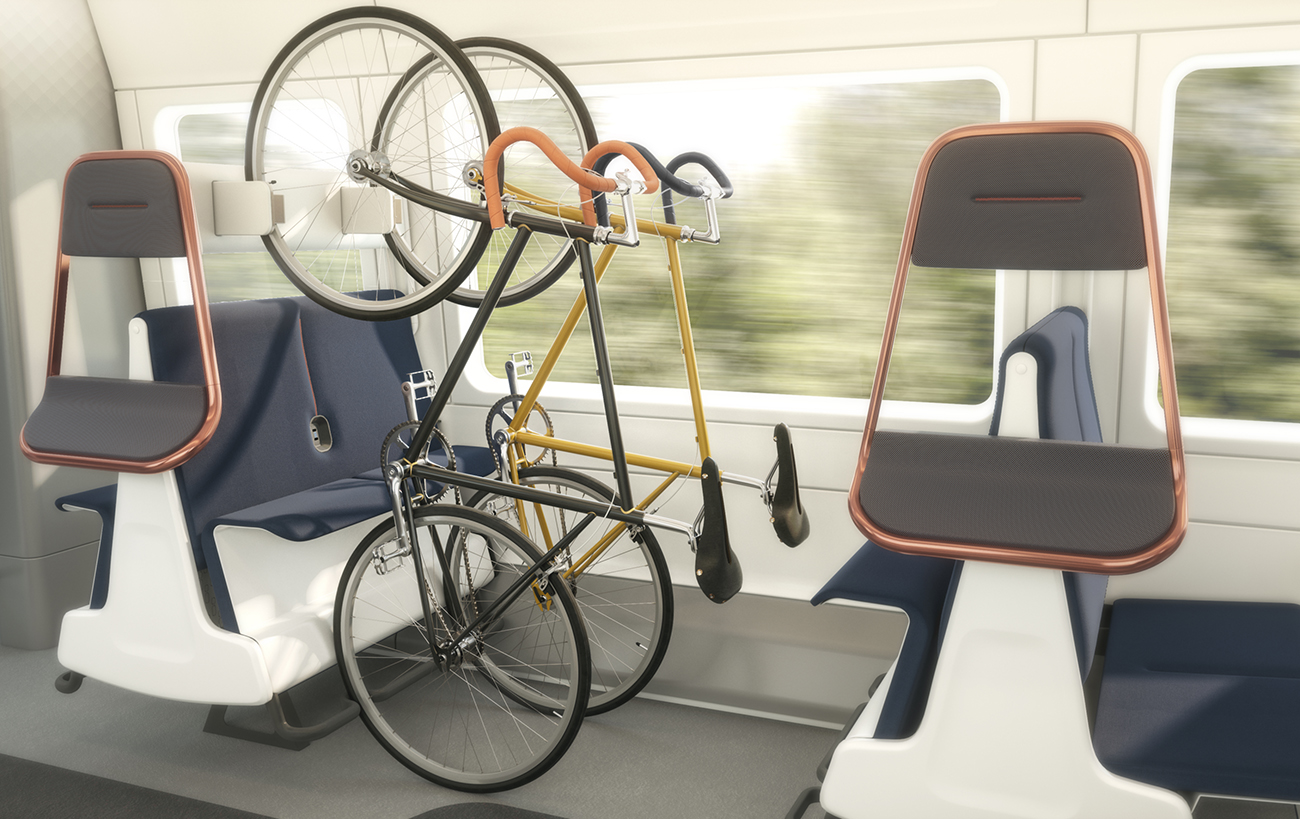And finally… Designs unveiled to enable social distancing on trains
Transport design consultancy PriestmanGoode has created a new solution for rail carriages that makes optimal use of the space to ensure that social distancing is observed.

The firm has adapted its 2016 Island Bay seat design, which was initially designed to increase capacity on trains, to expand onboard bike storage.
With services running to revised timetables and passenger capacity reduced to as low as 10%, the flexible new design makes optimal use of space blocked-off to ensure social distancing. It potentially alleviates pressure on bus and underground services, used to complete journeys, that are also under severe capacity constraints and that commuters may be reluctant to use.
Other key features of the seat include aisle rests with padded backs for passengers who would otherwise be standing unsupported and twin USB ports at every seat. The configuration complements existing seating in other carriages to meet the needs of the widest range of passengers.
Paul Priestman, designer and chairman of PriestmanGoode, explains: “As transport designers, the ‘first and last mile’ have always been important considerations for us as our design approach considers the entire customer journey. People typically use their own car, buses or underground services to start and end their journey, but many would prefer to use bikes as a lower-cost and more flexible alternative.
“We have found a way to adapt our ‘Island Bay’ seating design so that more bikes can be easily and safely accommodated onboard commuter trains. The space the bikes occupy helps with social distancing onboard and enables the passenger to continue or complete their journey at either end.
“The design was originally part of a brief set and funded by RSSB that we answered to find innovative solutions for overcrowding on suburban services. Our winning layout features regular seats during off-peak and a higher-density configuration during peak hours resulting in 15-20% more seats and increasing standing capacity.
“The flexible nature of the design has allowed us to adapt it very quickly to a different set of circumstances and accommodate bikes safely within each carriage as well as restricting seating to enforce social distancing measures. By installing flexible seating, train operators are able to adapt to changing customer needs from extra space needed for luggage, bikes or buggies to extra standing space at peak time.
The role of design is to solve problems and improve the overall experience for customers. We understand that passengers coming into London are looking to travel at a safe distance during their commute, but the prospect of a crowded bus or underground carriage may put them off making the entire journey.
“As urban planners in our major cities close roads to traffic to ease pressure on public transport systems and move people on to alternatives such as bikes, the revision to the Island Bay seating configuration supports that goal too. We also detect that commuters will be making healthier choices for the first and last mile of their journey as a consequence of this crisis.”













